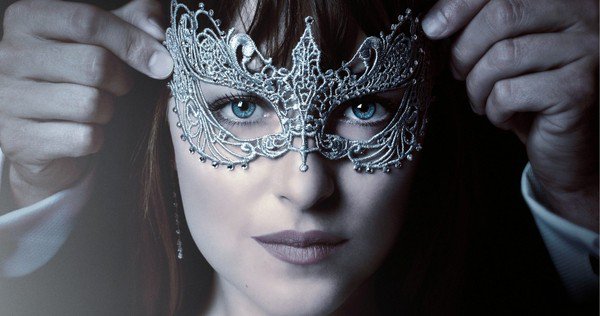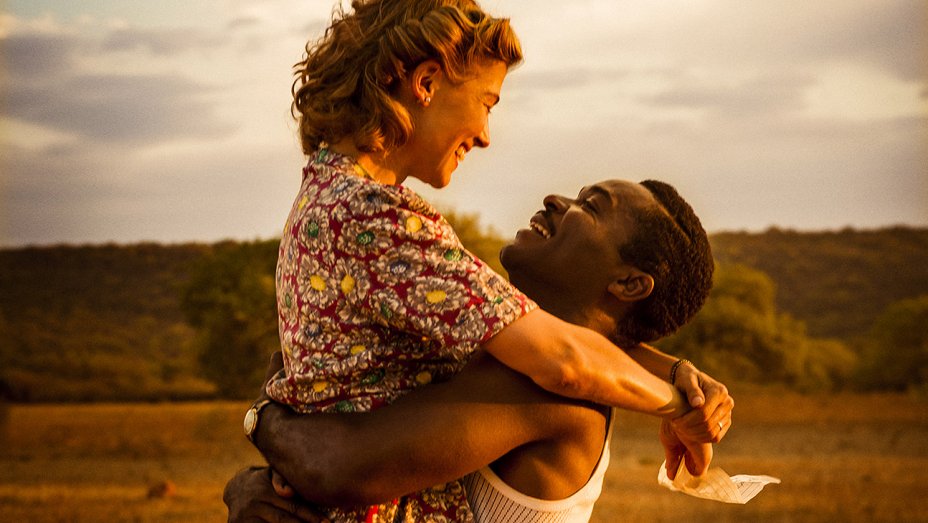Fifty Shades Darker
Posted on February 9, 2017 at 5:19 pm

Ibsen had it right in “A Doll’s House.” When his heroine walked out and slammed the door at the end of the play, he left it there. She didn’t come back in two sequels. Anastasia Steele (Dakota Johnson, wearing bangs, the universal signifier of adorkability), despite her name, is not that resolute. In “Fifty Shades of Gray” she was a shy college student introduced to the Red Room of Pain and the world of bondage and submission by fabulously handsome and fabulously wealthy and fabulously troubled Christian Grey (Jamie Dornan). As he explains to her, it is the submissive who has the power in the relationship. The dominant inflicts pain but the submissive sets the limits. Ana set the ultimate limit by walking out on Christian at the end of the first film. But just days later, he comes to a photography show featuring six huge portraits of Ana, buys them all because he doesn’t want other people gawking at her. The woman who just left him nevertheless consents to let him take her to dinner (“because I’m hungry”), and then invites him to dinner. After first insisting there would be no sex and then that they need to take it slowly, of course they end up having sex, and pretty soon he’s spanking her again, but only after she asks for it.
Maybe if you turned off the sound, it all might seem less dull and silly, like the kind of high-end perfume commercials they only show before Christmas and Valentine’s Day. With the sound on, it alternates between syrupy pop songs and clunky dialogue. Fans of the books may enjoy seeing the characters on screen but those unfamiliar with what I will generously call the storyline will find it more like a random series of what I will generously call events. Putting the book on screen reveals its essential flimsiness, its origins as “Twilight” fan fiction showing through. As with “Twilight,” this is the story of a girl whose purity of heart is so powerful she is able to tame the ultimate predator. Like “Twilight,” he is surrounded by a large, complicated, powerful family, most of whose members should have been jettisoned for the movie version because they do not add anything. Unlike “Twilight,” which was explicitly envisioned as a romance without sex (until it wasn’t), this is a shipper, with lots and lots of sex. While there is much talk about a “vanilla” sex life, there is also a lot of naughty stuff with fancy lingerie (where did it disappear to between the apartment and the party?) and sex toys (“That is NOT going in my butt!” Ana says merrily at the sight of a pretty set of Ben Wa balls).
While both Ana and Christian are supposed to be driven for professional achievement, they do not spend much time actually working. Ana loves her job as an assistant to Jack Hyde (Eric Johnson) the head of fiction for a small independent publisher. About half an hour after we realize he is a scummy guy who is trying to have sex with her, she realizes he is a scummy guy who is trying to have sex with her. So of course Christian has him fired and Ana gets his job. Seriously, I have seen six year olds playing with Barbies who came up with more believable workplace storylines.
Meanwhile Ana is bothered by Christian’s past, including an abused drug addict mother who died of an overdose, a suicidal ex-sub who is obsessed with him, and the older woman who seduced him when he was 15 and introduced him to the pleasures of pain (Kim Basinger, herself a pioneer of pretty, soft-focus soft-core S&M in “9 1/2 Weeks”). And Ana is trying to get Christian to tell her about his past, which begins with her drawing a line with red lipstick around his scarred but super-jacked chest to delineate what she should and should not touch. She apparently redraws it on him every day because it is still there days later, no smudges.
Sam Taylor-Johnson brought some humor and a woman’s perspective to the first chapter. She also streamlined it to remove irrelevant and distracting details, left in here for no reason. How does Ana not know Christian’s housekeeper and why is there a scene of their first meeting? Also, there are a lot of lacy little underpants in this movie, mostly being removed. There is also a situation where a lot of misery would have been avoided with a phone call or text message and yet it doesn’t happen, for no reason other than prolonging the agony.
This sequel, reportedly with more involvement by the author, is lackluster fan service. I’d even call it vanilla.
NOTE: Stay through the beginning of the credits for a teaser of part three, coming out in time for Valentine’s Day 2018.
Parents should know that this movie includes very explicit sexual references and situations, sexual harassment, extensive nudity, sex toys and issues of bondage and submission, very strong language, peril including a gun and a helicopter crash, and spouse and child abuse.
Family discussion: Why did Christian tell Ana not to touch his chest? Why did Ana care so much about her job?
If you like this, try; “Fifty Shades of Gray” and “9 1/2 Weeks”



